May 29, 2025 | 13:04 GMT +7
May 29, 2025 | 13:04 GMT +7
Hotline: 0913.378.918
May 29, 2025 | 13:04 GMT +7
Hotline: 0913.378.918
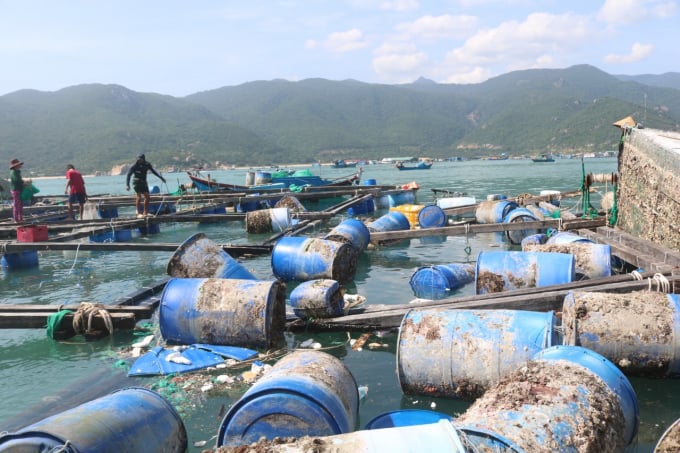
Marine farming with wooden cages is risky, vulnerable to economic damage caused by hurricanes, strong winds and waves. Photo: KS.
Climate change, storms, strong winds, waves are becoming more complicated and unpredictable, so fishermen employing traditional wooden cages often face risks and are susceptible to economic losses. As such, fishermen were forced to change farming methods to both adapt to climate change and ensure economic benefits, as well as to help the long-term and sustainable development of aquaculture.
Khanh Hoa is located in the South Central Coast region with many potentials and advantages for marine aquaculture development, with 385 km of coastline and over 200 islands, 3 bays and 2 lagoons that are relatively safe from strong winds.
Along with that, there are Research Centers, Training institutions and Research institutions on aquaculture in the area such as: Fisheries Research Institute III, Nha Trang Institute of Oceanography, Nha Trang University, has promoted the aquaculture movement in this province to develop among the leading groups in the country.
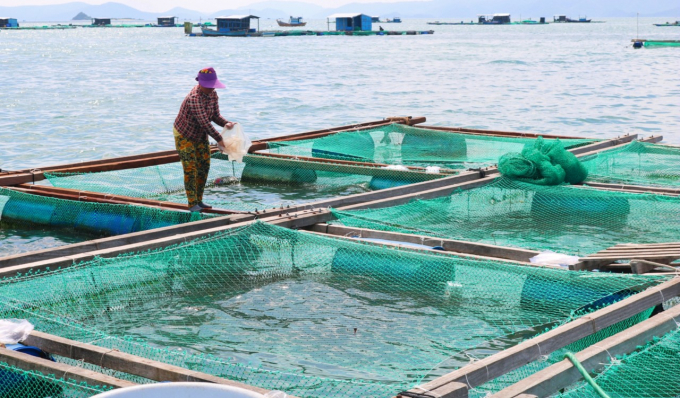
Aquaculture farmers mainly use wooden cages. Photo: KS.
According to Khanh Hoa Department of Agriculture and Rural Development, the province currently has 5 main tidal farming areas including Van Ninh, Cam Lam, Ninh Hoa Town, Nha Trang City and Cam Ranh City. In which, lobster and marine fish (cobia, pompano, barramundi, grouper) are the key marine species of the province, raised in four localities: Van Ninh, Ninh Hoa, Nha Trang and Cam Ranh.
The total number of lobster cages in the province is at about 64,500 cages, yielding about 1,300 tons. There are nearly 10,000 cages for marine fish farming, with a total yield of about 8,000 tons. In addition, some aquaculture species such as sea crabs, Pacific oysters and seaweed are generating income for coastal farmers.
However, the overall development of marine farming in this province is still not commensurate with its potential and strengths, because many difficulties and challenges remain.
According to Khanh Hoa Provincial People's Committee, cage farming areas in the province are mainly near the shore and along the island in lagoons, bays. Marine farmers in the province mainly follow the traditional process, on a small scale. Most cages are made from traditional wooden materials, which cannot withstand strong winds.
Therefore, it can be said that fisherman's cage farming is still outdated and has not yet adapted to climate changes. Most fishermen use fresh food, the farming density in the farming areas is not guaranteed, so the risks to the environment, risks of natural disasters and diseases are very high.
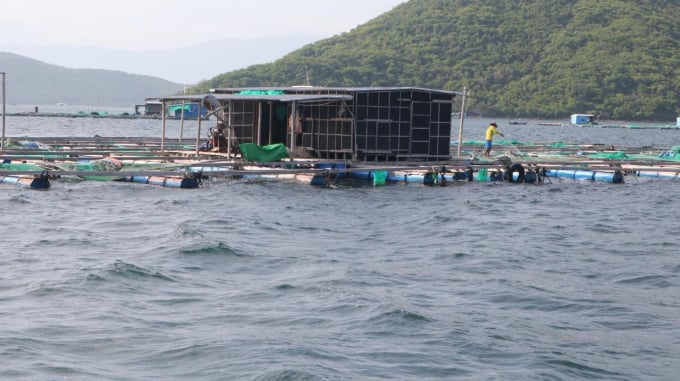
A wooden cage aquaculture raft on Van Phong Bay, Khanh Hoa province. Photo: KS.
Proof of the natural disasters risk is clear when the Hurricane No. 12 in 2017 (Hurricane Damrey) with level 12 wind force, level 15 gusts and heavy rain in Khanh Hoa smashed the traditional farming cages of Vietnamese farmers.
This hurricane caused very heavy damage with a loss of over 16,500 billion VND, of which aquaculture lost over 11,000 billion VND.

Hurricane Damrey caused severe damage to wooden cage farmers. Photo: KS.
The farming area on Van Phong Bay, where the center of the storm passed, was the location that suffered the most damage. Because in this farming area, in recent years, marine aquaculture has mainly been developed on a small scale at household level, in coastal areas.
Farming cages are made from primitive materials such as bamboo, wood, iron, steel, with small size (a volume of 96 - 125m3 per cage). These types of cages can only be raised in areas with slow flow, few waves and relatively short utilization time, so investment efficiency is not high, as well as poor resilience when hurricanes occur.
According to Mr. Pham Ngoc Luyen, Deputy Head of Van Ninh district Economic Division, when Hurricane No. 12 hit most of the cages and rafts in the district were destroyed, with about 50,000 damaged cages, equivalent to a loss of about about 3,000 billion VND.
Mr. Tran Van Thanh, a farmer in Van Gia town said, Hurricane Damrey is an unforgettable disasted in the minds of aquaculture farmers in Van Ninh district. Therefore, learning from this hurricane, in the rainy season, most people move their cages to a safer place.
At the same time, farmers also agreed to abandone the cage to ensure their safety. However, according to farmers, even though they moved the cages to a safer place, every time they heard news of hurricanes, they trembled and worried sick about the cages used for shrimp and fish farming.
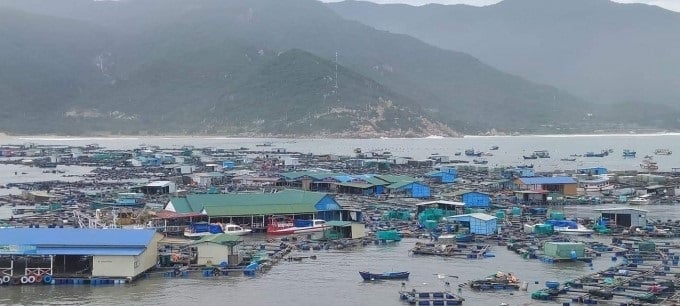
The rafts were pushed into piles by waves, causing great damage to aquaculture farmers on Binh Hung island, Cam Binh commune. Photo: KS.
In fact, farmers are right to worry because the impact from Hurricane No. 9, combined with the cold weather that occurred at the end of 2021 caused a big wave to destroy the wooden cage on Binh Hung island, Cam Binh Commune, Cam Ranh City (Khanh Hoa).
At the scene, all the farmers' cages were pushed by waves and clustered into a pile of firewood, many trees used to make the raft frame were broken in half lying scattered and plastic crates used to make floating rafts were scattered around on the sea surface.
People in Binh Hung Island run around looking for their raft hopelessly because there is no intact raft to recognize. Witnessing the scene of torn rafts, fish and shrimp drifted along with the foam, farmers suddenly lost their entire livelihood and cried their hearts out, we felt sorry and heartbroken for the farmers.
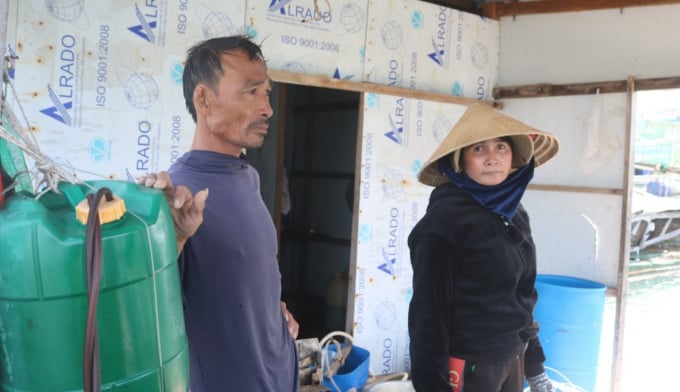
Aquaculture farmers in Binh Hung hamlet, Khanh Hoa devastated when their lives are severely damaged by hurricane. Photo: KS.
Standing on the broken farming cage , Ms. Dao Thi Ngoc Thao lamented: After many years of accumulating funds to invest in shrimp farming, the family has lost everything. The family also doesn't know what to do to restore production and repay the bank debt due to the increased investment in shrimp farming.
Unexpectedly, at the end of the year, there was an unusual surge of waves that drove all 30 cages, of which 20 lobster cages ready for harvest were, fish and shrimps cages drifted to the sea, the damage was estimated at nearly 2 billion VND.
Thao's family were not the only ones to have suffered billions of dollars in damage, many other farmers in the village also fell into the same crisis and became empty-handed. Like Mr. Vo Du's family, his 20 cages of blue lobster ready for sale have been lost (average of about 3 fish/kg).
Mr. Du said sorrowfully, currently each cage is worth 80 million. The family planned to sell in the next few days to pay off bank loans, buy feed for shrimp, as well as buy seed to reinvest in production. But who would have thought that at the end of the year, there would be a hurricane carrying big waves, causing the family to lose all the assets they had accumulated over a long time.
Meanwhile, he is hundreds of millions dong in debt from the bank, without knowing how to repay the upcoming debt. Therefore, Mr. Du along with many other farmers here want the government to pay attention and lend support to help them restore production and stabilize their lives.
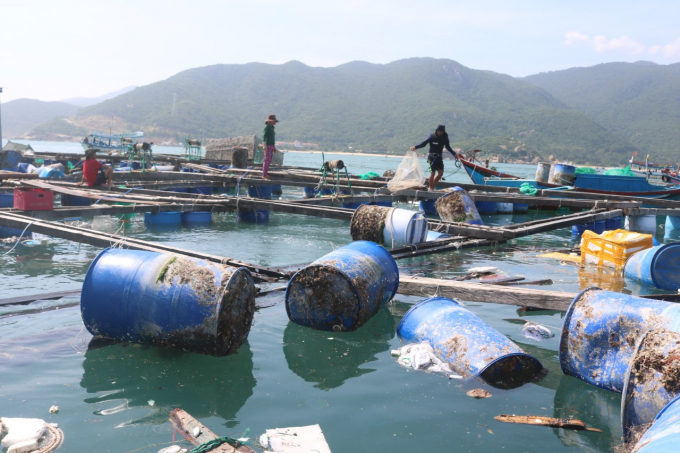
The devastating scene of marine farming cages of Khanh Hoa farmers, billions of dong invested lost in an instant after the hurricane. Photo: KS.
According to farmers in Binh Hung island village, this farming area has also been affected by hurricanes and tropical depressions for a long time, this is the biggest damage they have suffered. Although this hurricane did not arrive at land, it had a direct impact, it caused unexpected big waves 6-8m in height, with some rising even to 10m high, water flowed rapidly, driving the rafts together.
As a result, rafts and cages crashed to one another, so no intact rafts can be found left in Binh Hung, fish and shrimp escaped from cages. Therefore, facing the challenge of climate change, natural disasters and pandemics, cage aquaculture farmers need to change their production methods to ensure the integrity of shrimp and fish stocked.
Mr. Tran Van Vinh, Head of Binh Hung village, Cam Binh commune said that the whole village has about 120 aquaculture rafts, mainly blue lobsters and fish of various kinds. To cope with Hurricane No. 9, although the villagers have already reinforced the rafts firmly and safely shelted at the shore, so there was no loss of life, the big waves damaged all of the farming cages, causing heavy losses.
According to Cam Binh Commune People's Committee, the damage caused by Hurricane No. 9 in Binh Hung village heavily damaged 2,472 cages, of which 573 cages were for raising cotton lobsters and 1,899 cages were for raising blue lobsters. Additionally, 82 rafts were damaged with levels ranging from 20% to 100%; 2 boats and 1 canoe sunk, the total damage caused by this storm is estimated at 384 billion VND.
Translated by Nguyen Hai Long

(VAN) Ms. Nguyen Thi Dung, Deputy Director of Ngoc Hoang Cooperative, shared about the journey of bringing dragon fruit to Europe, achieving annual revenues in the billions of VND.

(VAN) Bamboo products from Thang Tho Bamboo Cooperative have reached many countries around the world, while also creating jobs for local workers.
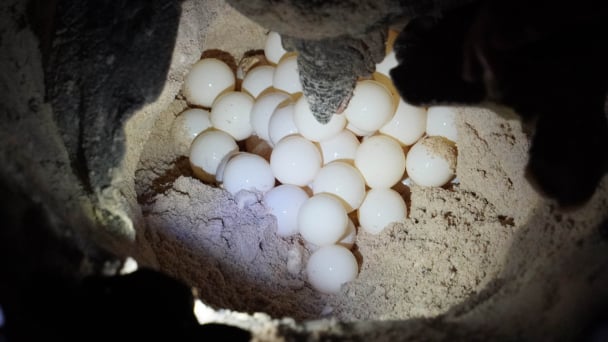
(VAN) The Management Board of Con Dao National Park reported that a green sea turtle, tagged in the Philippines, has traveled thousands of kilometers to lay 84 eggs on Bay Canh Islet.
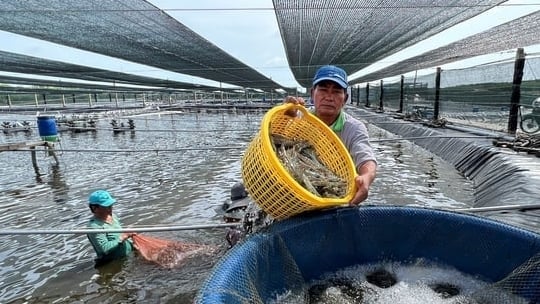
(VAN) Green technology is paving a new path for sustainable aquaculture in the Mekong Delta in particular and across the country in general, helping reduce emissions and adapt to climate change.
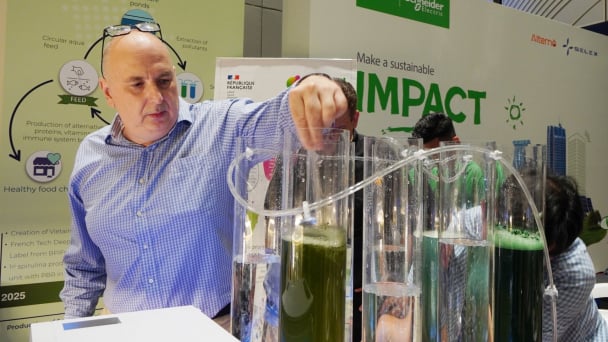
(VAN) On May 27, La French Tech Vietnam (the French startup and innovation community in Vietnam) held the French Tech Summit Vietnam 2025.
/2025/05/27/4731-2-223159_980.jpg)
(VAN) No votive paper, no styrofoam, no plastic bags, no plastic bottles, and no single-use plastic trays are the key rules tourists should keep in mind when visiting Con Dao.
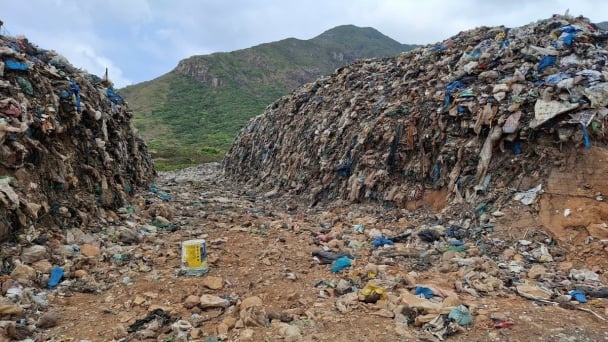
(VAN) In the fight against plastic pollution, Vietnam has been demonstrating a proactive, pioneering, and active role in addressing the greatest environmental challenge today.